Understanding the difference and importance of the concept of True Wind and Apparent Wind is fundamental to sailing. To navigate, we use both mechanical and electronic instruments to measure these parameters.
If we measure the wind speed and direction is mounted on the ground, then the readings obtained are those of the true wind speed and direction. If we take this same instrument and mount it on a boat moving through the water, then the reading will be very different from that taken on land. These readings show the apparent wind speed and direction relative to the ship. The term “relative to” is used because the apparent wind is applicable only to the particular ship we are looking at and is not the same for other ships sailing in the same area.
If the true wind is blowing at 20 knots from the south and the ship is traveling at 15 knots in a southerly direction, then the wind speed measured on the instrument will be the sum of the two speeds (35 knots) and the wind direction will be from the south. Similarly, if the ship is traveling at 15 knots in a northerly direction, the measured wind speed will be the difference between the two speeds (5 knots) coming from the south. It is a matter of vectors.
This is a simple and easy to understand scheme:
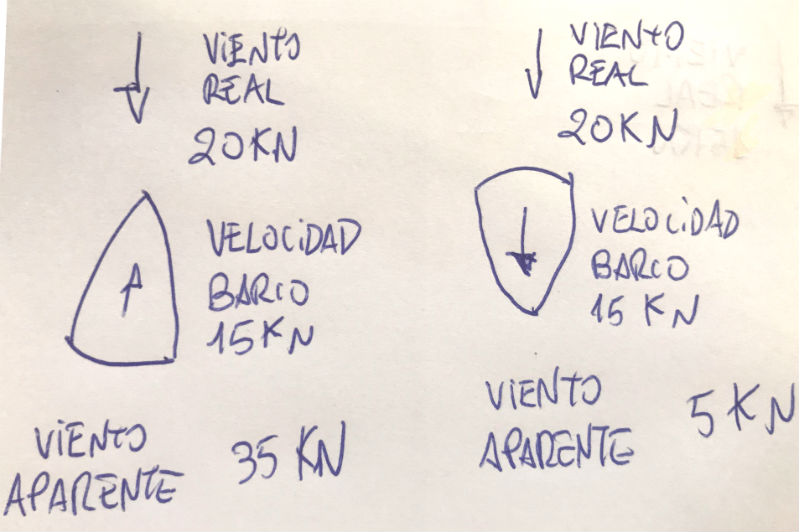
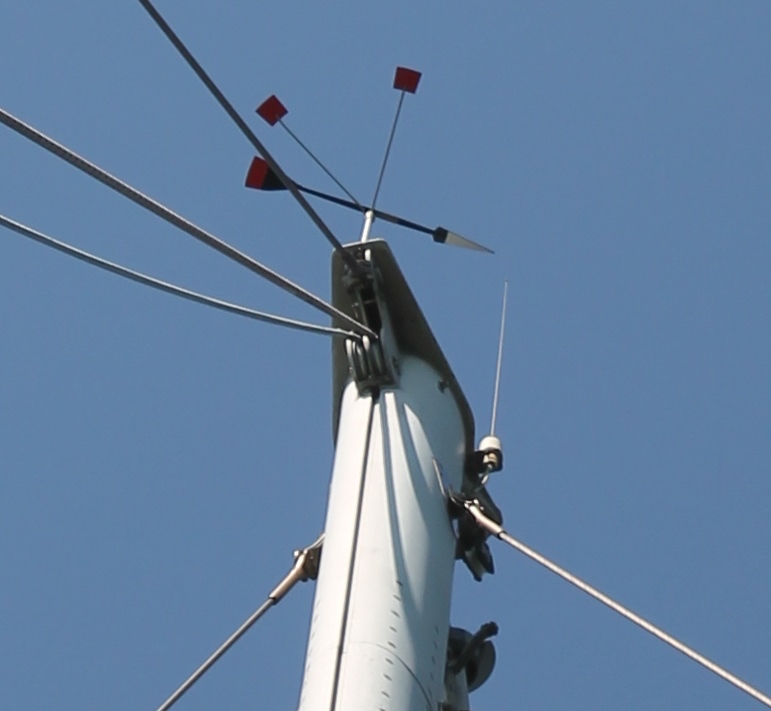
Fig.1 The “Windex” indicates the apparent wind direction.
The situation becomes a little more complicated if the ship is traveling at 15 knots to the east. What wind speed and direction will the instrument show? To arrive at this answer, we will have to resort to something called a vector. A vector is a line with an arrowhead. The length of the line represents the speed and the direction of the arrowhead shows the direction in which the wind or ship is moving.
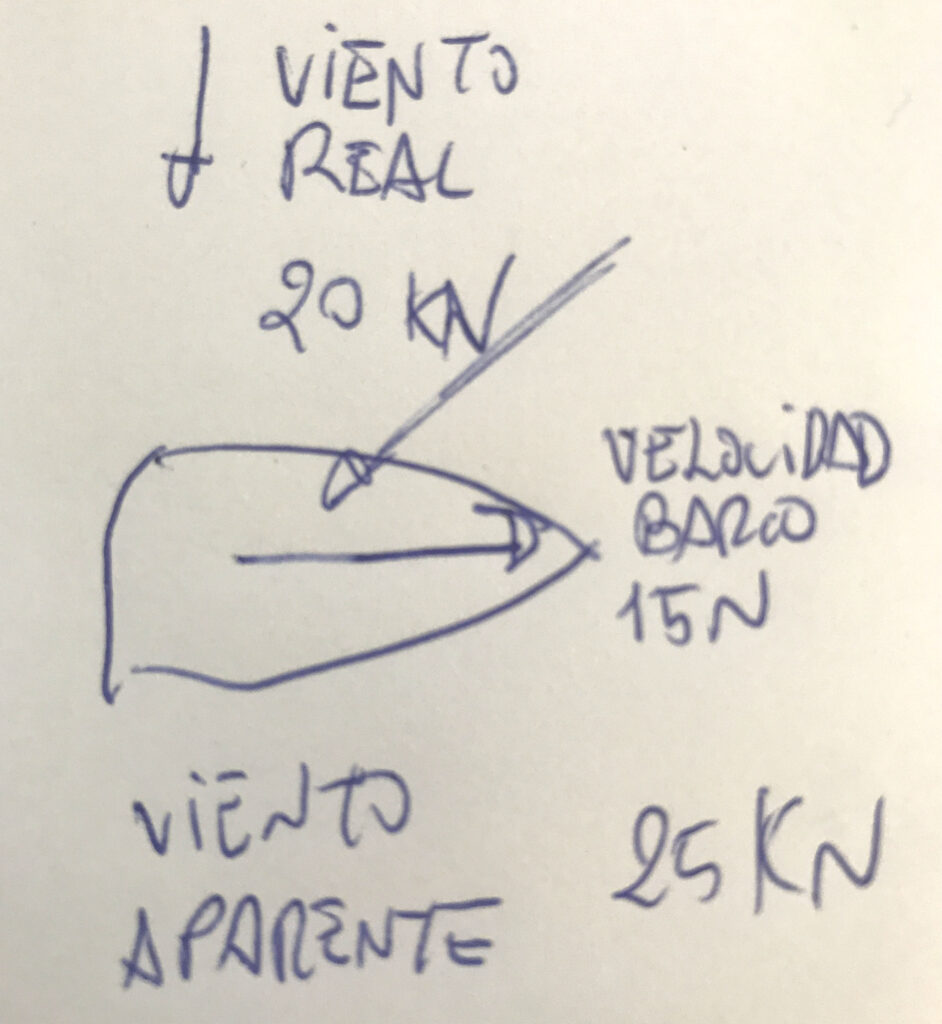
There are some websites that help you to calculate the value of the real wind, depending on the apparent wind.
https://www.madinstro.net/sundry/navigation/windreal.html
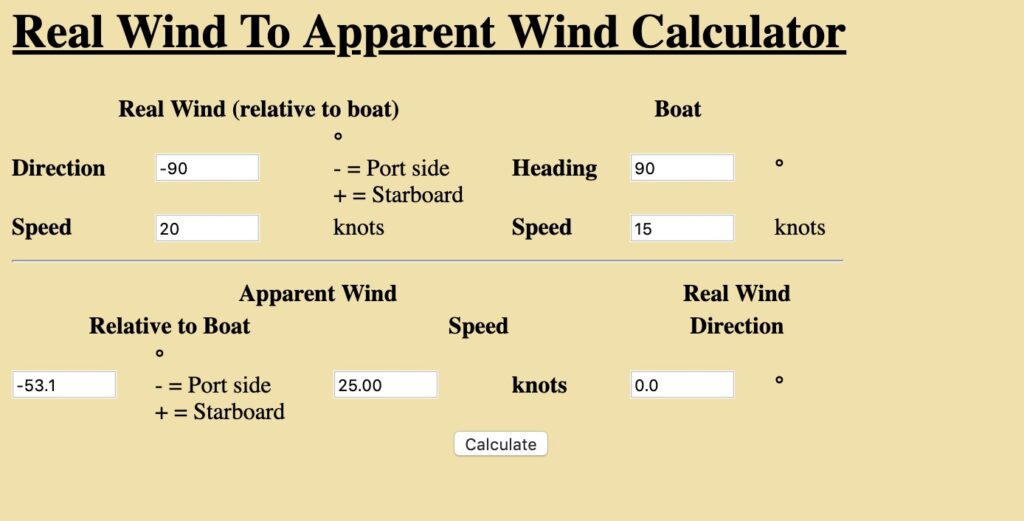
Introducing
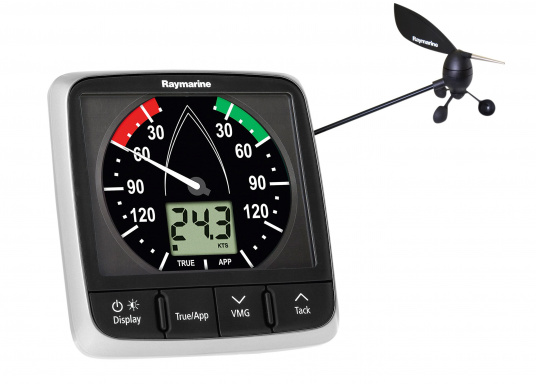
Fig. 2 A sailboat wind rig (screen and masthead transducer) . You can calculate the wind through the apparent wind direction and speed along with the actual boat speed.
Literature:
Garmin: https://support.garmin.com/en-IN/?faq=lQFTLBSlv73TYGsOp
Image Wind equipment: https://www.raymarine.com
